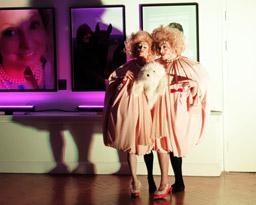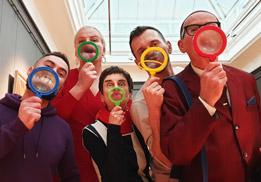
8 minute read
Have you seen Queer The Pier?
GScene was at the opening...
Two hundred years of Brighton LGBTQ+ history is explored in the Brighton Museum & Art Gallery’s new exhibition, Queer The Pier. By Eric Page.
Advertisement
Queer The Pier, a community curated display, peers into local LGBTQ+ history using objects from the museum collection that have been repurposed and reimagined from the queer perspective. We embark on a mince down the historical pier surrounded by familiar objects which have been reimagined and repurposed with interactive exhibitions that explain, inform and entertain. There’s a dancing music hall puppet with space to put your head through, rejoicing in the life of Vesta Tilley, a male impersonator performer on the pier. It’s made for Twitter and Instagram but also makes a serious point of how Brighton made space for gender performance and unconventional but highly visible LGBTQ+ lives.

Anessa Chadhrey as Vesta Tilly
Picture by Eric Page
A wonderful wooden model where you turn the handle to make it work explores the life of local sea diving performer, Harriet Elphinstone-Dick, who swam from Shoreham harbour to the West Pier regularly in the 1870s. Celebrated in Australia, where she moved with her partner, she’s a well-known figure in Melbourne after opening a famous women’s gym and teaching swimming to thousands of people. Adrian Devaney, community curator, said:
Queer the Pier is important not only because of the past communities it sheds light on, but also because of the present communities it has engaged with and the doors this has opened. To represent a community and a history as multi-faceted, nuanced, and complicated as ours, you need a team and a working method that reflect that. I hope other LGBTQ+ people can see this in our exhibition: not only that we’ve such rich history, but that we tell it best when we tell it together.”
A highlight of the first cabinet is the photo albums Tommy and Betty, lesbian wartime lovers. A collection of personal memorabilia was found in a house clearance sale in Worthing in 2017. It includes an archive of

Tommy and Betty's photo album
more than 50 years of loving, intimate photos of their life together, all taken on Betty’s Icarex camera. Betty was a professional photographer so captured all the intimate loving details of their lives together, allowing us to see authentic lesbian lives from the last 50 years as they work, celebrate birthdays, go camping and all the everyday things which were not usually captured as folk were keen to preserve their privacy. Betty both took and developed photographs, so this archive of their lives together is a wonder to behold. One of their albums, along with medals and other ephemera is on display.
There’s film footage of Brighton’s conjoined Hilton Twins.

Daisy and Violet, born in the Queens Arms in 1908 and immediately put on display. From the 1930s they were taught to dance and play instruments for a life in variety shows. Both twins married gay men and it’s suggested that Violet was a lesbian.
There’s some superb film on loop of Brighton Gay & Lesbian Pride 1992 and Trans Pride 2019. A joy to watch, they show a community coming of age, assertive, strong and vibrant diversity.
The exhibition does a good job of readdressing the diversity of the LGBTQ+ community, making sure that there’s a broad range of communities and identities on display, not just rich white gays stuff. This gives the exhibition an authentic friendly vibe. You learn as you smile. It’s full of small joyful moments of discovery. One cabinet is full of costume, clothes and apparel, precious objects, wigs, drag and jackets from across the gender spectrum and showing us how much effort went into making and wearing these fabulous outfits and how they represent not just who but what people were.
There is some fierce peacocking going on here, and seeing these outfits in a museum case reminds us of how often we don’t see our own ‘uniforms’ on honourable display.

Gentleman Jack fans will be pleased to see Anne Lister’s diary on display. This thrilling object of lesbian desire is remarkable, and the coded excerpts talk all about her visit to Brighton in 1820.
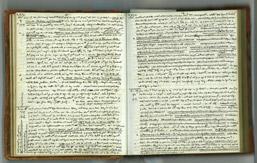
The dairies explore her adventures and are a clear account of her lady loving, pursuits of society women and some charming domestic details. Lister’s diaries explore and expose a whole word living in plain site of her peers.
A single typewriter represents the influential writings of Peter Burton, who lived in Brighton and wrote for Spartacus, the UK’s first gay magazine, published out of a boarding house in Preston Street in the late 1960s. Peter went on to write for Gay Times and Gay News for 40 years.

Peter Burtons typewriter
A wall display shows flyers from the collection of Alf Le Flohic

Pic by Rosie Powell
Along with adverts for the Lesbus, which toured the city stuffed with women, sexual health campaign materials and community events. It captures the courage and humour of the LGBTQ+ community in Brighton & Hove in the peaceful struggle against inequality and prejudice.
An original fortune-telling machine has been repurposed by LGBTQ+ Romany, gypsy and traveller communities working with Delaine Le Bas, exploring ideas of representation, paying homage to Brighton Pier’s legacy of seaside attractions. It delivers queer cards when you put a coin in the slot. The money goes to a local LGBTQ+ traveller charity.
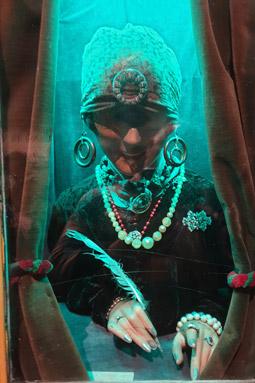
Fortune telling machine
There’s a photo of the gravestone of John Spershott, the last man to be hanged for buggery in 1835. He was 18 years old. It’s still looked after by his descendants. And there’s the only existing photo known of the Sussex Gay Liberation Front, protesting in front of the war memorial in 1973. Images 150 years apart but sharing a common theme.

Campaign Badges, Alf Flohic
A superb display of 1980s campaign badges worn by marchers from across the south east is alongside a beautifully embroidered tapestry from a long term trans activist and ex prisoner, who spent many years in Lewes Prison.
EJ Scott, curator of Queer the Pier, said:
So it's important that visitors and residents understand the role this community has played in Sussex's history – from fostering the progressive arts scene we know today, to continuing the long struggle for equal rights at Trans Pride... queer politics, performance and people have helped shape the city we know today. It's only right that our local museum should also include queer stories – it helps us better understand the place we live in, fostering stronger social values of acceptance and diversity.”
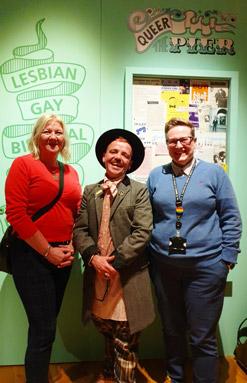
Queer The Pier explores Brighton’s reputation as a place where people of all genders, sexualities, social classes and ethnic and religious backgrounds have come to seek pleasure, liberation and fulfilment. It’s a timely reminder that LGBTQ+ people have always been part of Brighton & Hove’s story and celebrates the rich cultural history of Brighton’s LGBTQ+ community which has been disregarded for too long.
MORE INFO
Queer The Pier is part of Be Bold, a series of collaborative exhibitions and events, programmed with Brighton & Hove’s LGBTQ+ communities.
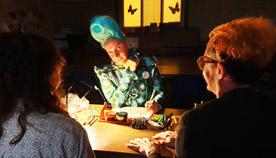
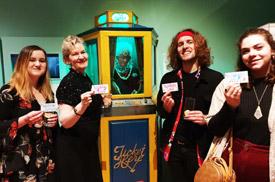


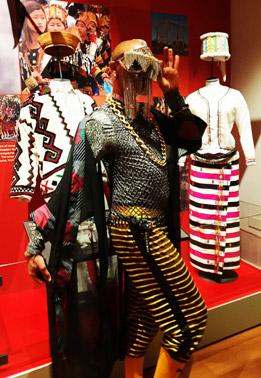


The exciting launch of Queer The Pier exhibition on Friday, February 13, at the Brighton Museum & Art Gallery, was superb.
A wide range of city queers, dressed to the nines, proudly promenaded though the galleries, danced to deeply sexy tunes from DJ Affy, sipped drinks and furiously, fiercely mingled. These queer evenings are always a huge success, bringing in people from a range of backgrounds to enjoy our cultural spaces in an innovative and relaxing way.
There were two performances from Thick & Tight, the award-winning dance duo who create a mix of dance, mime, theatre and drag, taking influence from a wide range of historical, political, literary and artistic subjects. They sound too clever by half, and they are. Effortless chic from shimmying in fringed cha-cha trousers to an extraordinary double-headed Barbara Cartland pronouncing on love, femininity and poodle care, they delivered seriously queer fun vibes. Lasana Shabazz performed an evocative piece in the main furniture gallery, with his provocative edgy energy and powerful physicality contrasting with the genteel surroundings. Lydia L’Scabies growled her way thought a topical version of Fever, local legend Boogaloo Stu held what appeared to be a séance with crafts and Sea Sharp hosted a community open mic space. There was some curious and curated opinion on display. Curators, artists, politicians, writers, knitters, coders, parents, sports folk, clinicians, activists, retirees and checkout staff mingled through the displays, everyone delighted in exploring and sharing the museums spaces in such a fun and engaging way. More of this please!
Words & Pics by Eric page
